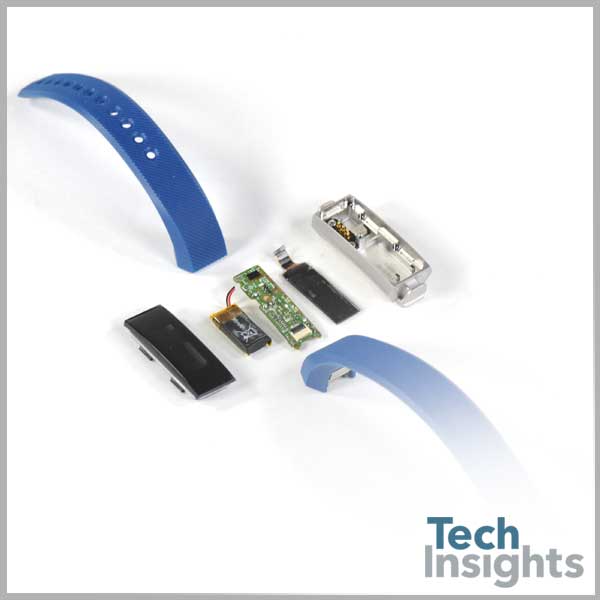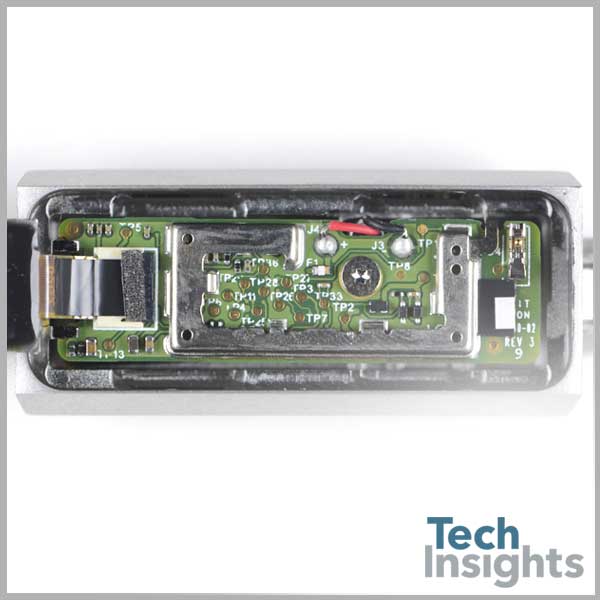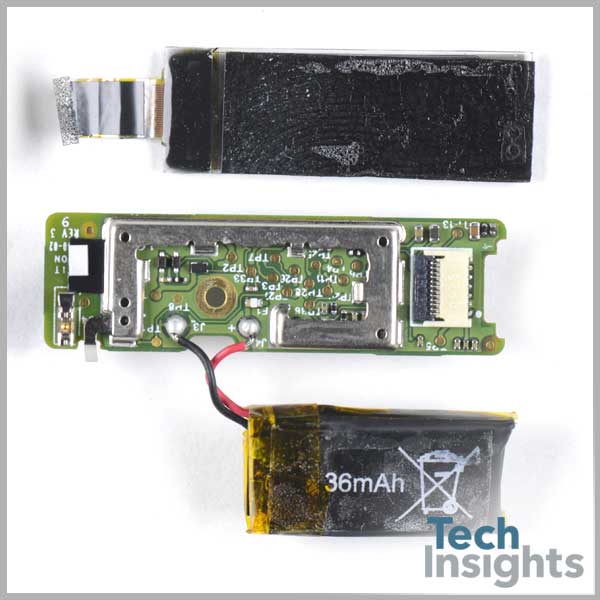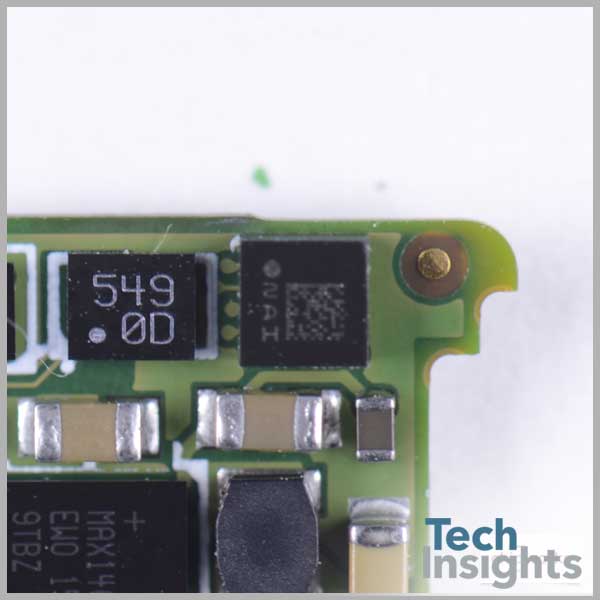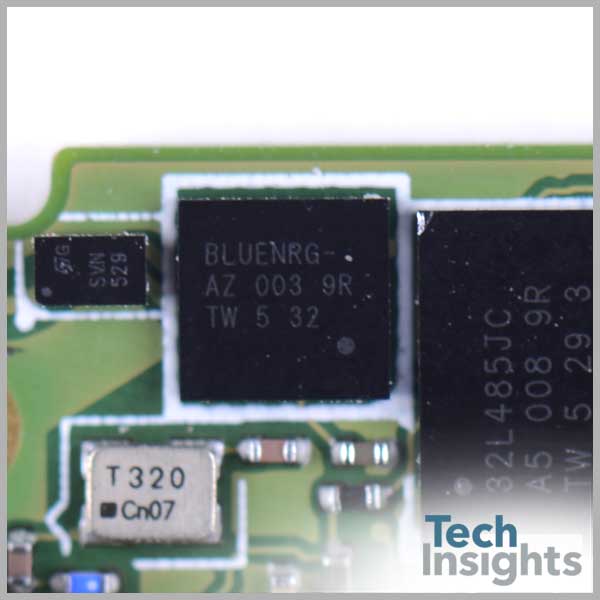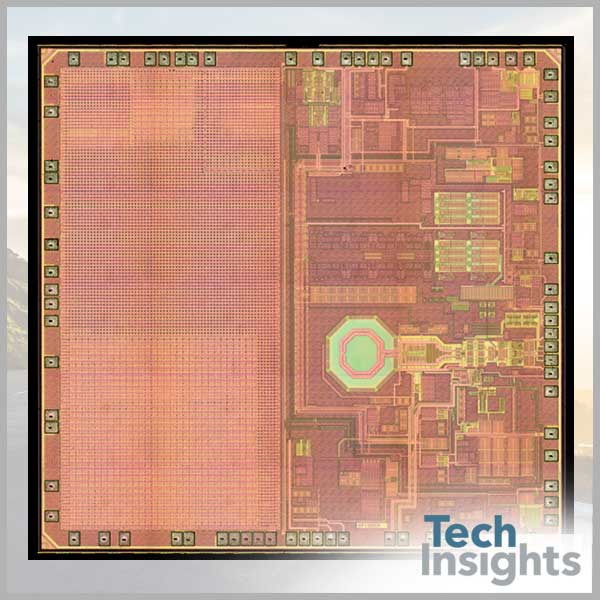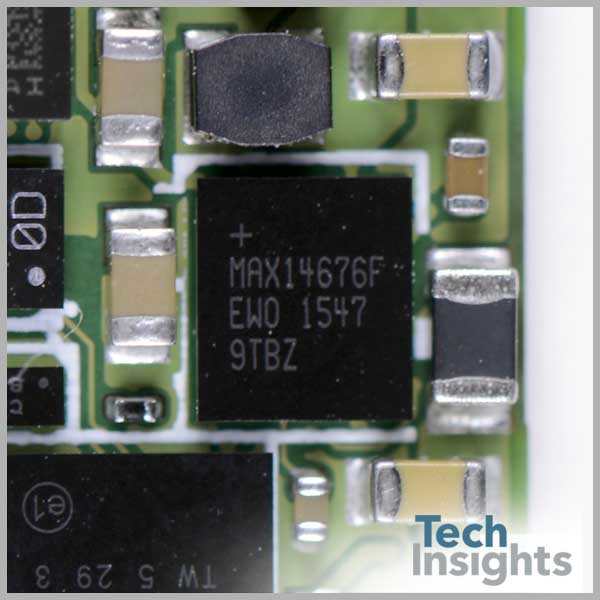Posted: March 20, 2016
Contributing Authors: Mandi Gingerich, Julia Elvidge and Jim Morrison
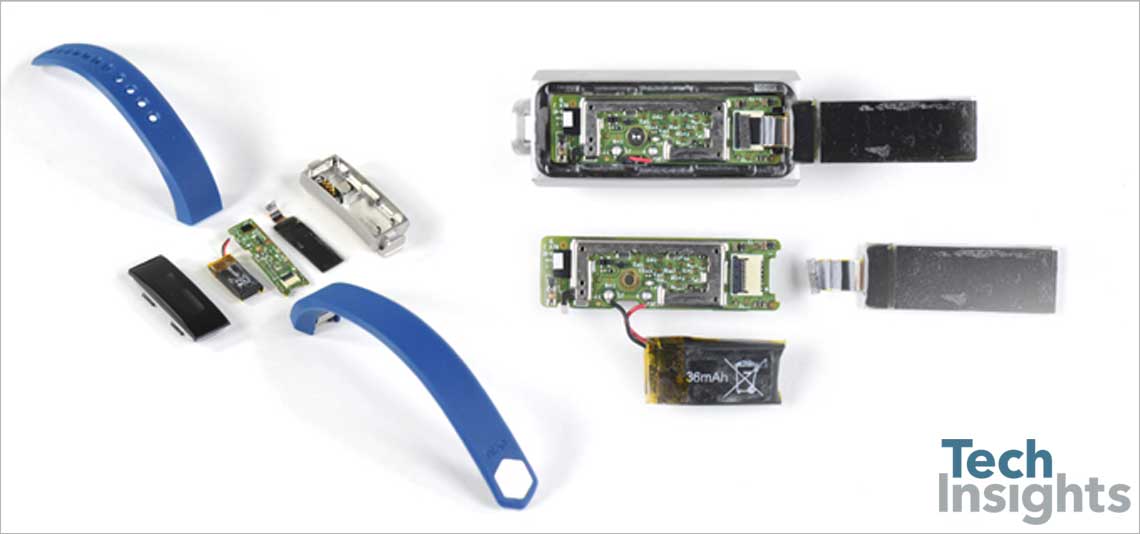
Fitbit Alta
The new, more-stylish Alta fitness tracker
If you look through our recent blog history, you will quickly see evidence of TechInsights’ interest in the latest in wearable technology. So, naturally, when such a big name in the market as Fitbit announced a change of pace with the new, more-stylish Alta fitness tracker, we were excited to take a look.
At 15 mm wide, the Alta is both slimmer and lighter than its predecessors and with its many interchangeable band options and the glossy color OLED screen, it is a thing of beauty. While it is marketed as a much as a fashion accessory as a fitness tracker, it is not just a bracelet (actually, Fitbit seems to be careful to call it a “wristband”), it does have a function too. Let’s have a closer look inside to see what makes this new Fitbit “tick”.
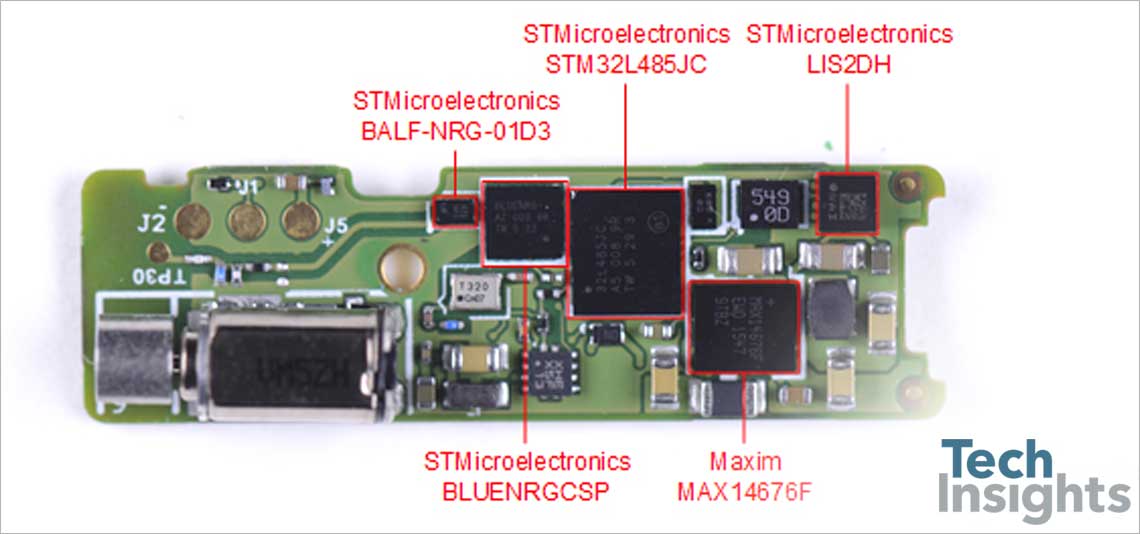
Inside the Fitbit Alta
What is not inside the Alta
Before we open it up, we already know what we will not find in this device. Unlike its predecessor and price-twin, the Fitbit Charge, the Alta does not include a heart rate monitor or altimeter. Otherwise, it appears to be quite similar.
The majority of the data required for the Alta to perform its duties comes from the STMicroelectronics LIS2DH 3-axis accelerometer. Using Inside Technology, the industry's largest semiconductor databse, we can see that this linear accelerometer belonging to the “femto” family is also found in the Charge, Charge HR, and Surge products, as well as other wearables by Garmin and Misfit.
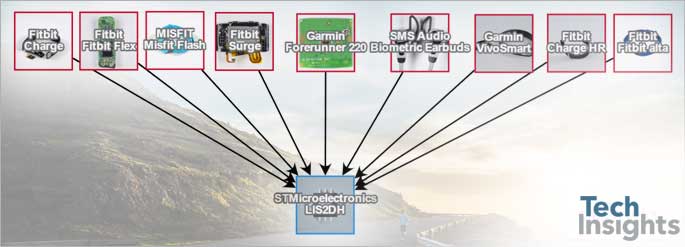

No touch controller
No touch controller
If you have read reviews of the Alta, many of which describe the color OLED as a touch screen, you might also be expecting to see a touch controller. Our teardown confirms there is indeed no touch controller, indicating that Fitbit’s description of a “tap” screen is quite purposeful. This tap function is likely driven by the Alta’s only sensor, the accelerometer.
To sync and communicate with the devices that will display the user’s data, the Alta again employs a STMicroelectronics part. The BLUENRGCSP is a Bluetooth specification v4.0 compliant, slave single-mode Bluetooth low-energy network processor.
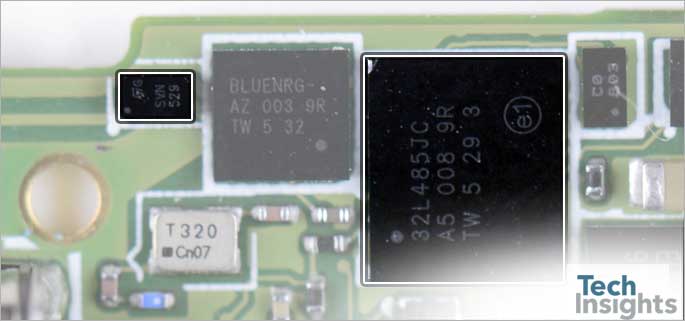
STMicroelectronics found in the Fitbit Alta
STMicroelectronics found in the Fitbit Alta
Also provided by STMicroelectronics are a BALF-NRG-01D3 ultra-miniature balun and the STM32L485JC microcontroller (MCU). The balun has been spotted once before in the ASUS VivoWatch, but the MCU is new to TechInsights. STMicroelectronics describes STM32L4 MCU series devices as ultra-low-power and flexible, citing an ARM® Cortex®-M4 core with up to 1 Mbyte of Flash memory and up to 128 Kbytes of embedded SRAM.
By now, you may be noticing a pattern: the Alta seems to be a huge win for STMicroelectronics, providing four of the five silicon devices we have identified. The Inside Technology screenshot below shows the sole exception: the Maxim, a wearable-optimized Li-ion power management IC.
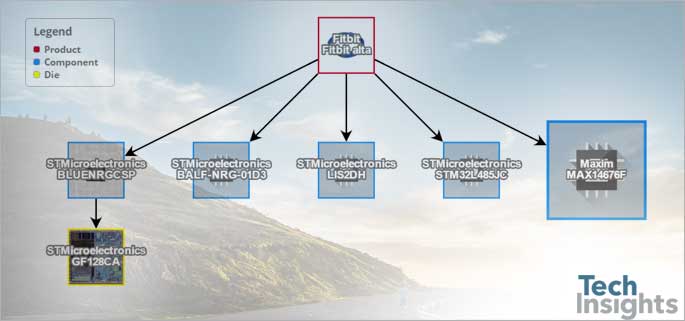
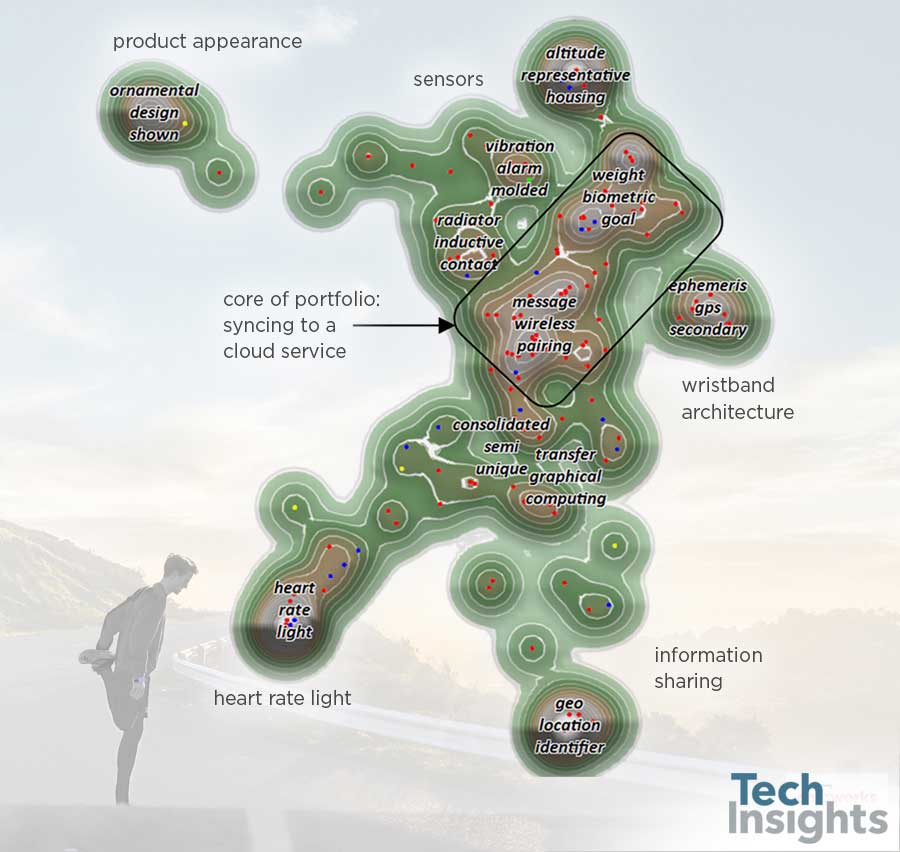
TechInsights Patent Analytics and the Fitbit Alta
TechInsights Patent Analytics & The Fitbit Alta
Diving even deeper into TechInsights’ expertise, we have also produced a landscape of Fitbit’s patent portfolio using TechInsights Patent Analytics Solution Powered by KMX. These patent landscapes are topological representations of groups of patents. They are generated using the words within the patent text. Peaks in the topology represent a group of patents that are very similar. The words on top of this peak are the three most used words in the text of these patents and represent the technology area – but are generated automatically (so they may seem out of order to us sometimes). The distance between peaks is a representation of how different two technology areas are. If they are close together, they are similar. If they are far apart, they are very different.
Fitbit wearables are considered part of the IoT (Internet of Things) sector. The wristbands are sensor systems which are synchronized to the cloud. Inspecting the landscape, we see the core of their patent portfolio consists of wireless pairing to provide messages about biometric goals (peaks starting with message… and weight…) – sounds like Fitbit! The five spokes of the landscape surrounding these core patents address five different domains: how their product looks (ornamental…); sensor technology (altitude…); architecture of wristband biometric measurement systems (ephemeris…); higher level services using GPS (geo…); and the heart rate sensor light (heart…).
Since the beginning of its consumer availability in early March, Fitbit reports that over 1 million units of the Alta have already been shipped, again emphasizing the size of this win for STMicroelectronics. This success is evidence of the trend noted by Wired in their review of the Alta, that 2016 will be the year wearables develop a fashion sense, noting “everyone from Fossil to Huawei has taken an interest in figuring out how to make technology beautiful.” At TechInsights, we look forward to seeing the inner beauty of these devices shine through too.





